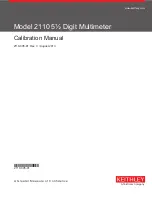
A-4
61181031L3-5A
Response Time Out (T200)
In AITS mode, this timer represents the maximum time
allowed without an acknowledgement before the frame
will be retransmitted or other recovery actions will be
taken. The timer is fixed at 200 ms.
Link Inactive Time Out (T203)
In AITS mode, this timer represents the maximum time
(in milliseconds) allowed without frames being
exchanged. A receive ready (RR) supervisory frame
will be sent when the timer expires. The timer is fixed
at 10 ms.
DCC Operation
After initialization, the LAPD mode, the NSAP area
address, and system ID must be provisioned, and the
TL1 target ID must be known in order for the OSI stack
to be started. Once the OSI stack is started, the only way
to turn it off is to change the LAPD mode to “Disabled.”
The NSAP area address or System ID can be changed at
any time. Changing the NSAP before the OSI stack has
started is non-service affecting and can be done as many
times as desired.
Changing the NSAP after the OSI
stack has started is service-affecting and will require the
software to be rebooted in order for the new address to
be used.
Special care must be taken when typing in the NSAP
area address. Communication with the MUX will
terminate if the area address is entered incorrectly.
Follow the steps below to change the NSAP area
address once the OSI stack as been started:
1. Move all of the traffic to one of the MUX cards.
2. Change the NSAP area address on the Offline
MUX module.
3. Select the option to reboot the software after an
address change on the Offline MUX board.
4. Monitor the status of the Offline MUX board.
Proceed when the status of the DCC indicates Link
Down or Up AITS.
5. Move all of the traffic to the Offline MUX.
6. Repeat steps 2-5 to change the NSAP area address
on the other MUX module.
Turnup Sequence
Follow the steps below for turnup:
1. On the SCU, set the MUX Auto Provisioning to
“Disable.”
2. Plug in the first MUX module.
3. Enter the NSAP area address, system ID, and the
DCC mode.
4. Set the Linked Provisioning option to “Enabled.”
5. Plug in the second MUX module.
6. After initialization, verify that the NSAP area
address, system ID, and DCC mode are identical
on both MUX modules.
No provisioning data exists in the serial EPROM and
the mate MUX board is provisioned and operational.
Provisioning will be downloaded from the mate. The
NSAP area address and system ID must be entered via
the craft interface connected to the SCU. The MUX
board shall request the CLLI code from the SCU. The
OSI stack will be started after the CLLI code is
received.
State Information (Status)
State information exists only on the main status menu
display. It cannot be retrieved remotely via SNMP or
TL1.
State definitions are explained in the following subsec-
tions.
Disabled
The DCC is not active. The LAPD mode has be set to
“Disabled” via the provisioning menu.
Bad NSAP
The DCC cannot be started because the NSAP area
address or system ID has not been provisioned.
Wait for TID
The TL1 TID has not been received from the SCU.
Link Down
The DCC has been started but communications are
down.
Link Up AITS
The DCC has been started and communication across
the DCC is occurring. AITS indicates that the infor-
mation is acknowledged at the data link layer.
Troubleshooting Link Down Conditions.
The DCC may not be enabled at the other end of the
facility. For the OC-3 DCC, the device that is driving
the DCC at the other end of the fiber may be at fault.
Refer to the appropriate vendor reference
documentation.
If the equipment is a Fujitsu FLM, set the LAPD state to
“In Service”.
Содержание Total Access OC-3 L3
Страница 28: ...28 61181031L3 5A...
Страница 34: ...A 6 61181031L3 5A...







































